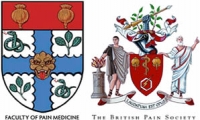Antidepressants and Anticonvulsants course for Medical Doctors



This session describes the pharmacology of antidepressants and anticonvulsants and their clinical use in pain management.
Learning Objectives
By the end of this session you will be able to:
- List the different types of antidepressant and anticonvulsant drugs
- Outline the mechanism of action of antidepressants and anticonvulsants with relevance to pain pathways
- Explain common side-effects associated with antidepressant and anticonvulsant use
- Identify types of pain antidepressants and anticonvulsants are used to treat
Antidepressants and anticonvulsants may be used alone or in conjunction with other pain medication. Therefore, it is important that you understand how these drugs work in the treatment of pain and the side-effects that may arise so that you can support patients in the management of their condition.
Lee has worked across the various disciplines of pain medicine during his post as Consultant Pharmacist with Doncaster and Bassetlaw Hospitals. His current post involves regular clinical sessions in palliative care and he chairs a group liaising between the various pain specialisms.
Outside of pain management, Lee holds responsibility for updating the community-wide medicines formulary as chair of the local Formulary Liaison Group. He recently co-ordinated updating of the local guidance around prescribing in neuropathic pain.
Lee is a content author on the e-PAIN project.


Emma Davies has been an Advanced Pharmacist Practitioner in Pain for over 12 years. She provides primary care clinics which, although covering medication management, take a holistic approach to supporting people to live effectively with pain. In addition, she teaches, develops guidelines and educational materials and provides advice to the Welsh Government on pain management, as well as being a regular contributor to professional journals.
Co-founder of the livewellwithpain.co.uk website; Emma is also currently studying for a PhD, examining trends in opioid prescribing and healthcare resource utilisation in Wales.
- Assessing Treatment Effectiveness course for Medic...
- Posted By eIntegrity Healthcare e-Learning
- Posted Date: 2024-11-15
- Location:Online
- This session describes how to compare the effectiveness of different analgesics and explains why com...
- Local Anaesthetics course for Medical Doctors
- Posted By eIntegrity Healthcare e-Learning
- Posted Date: 2024-11-15
- Location:Online
- This session describes the pharmacology of local anaesthetics and their clinical uses as analgesics....
- Opioids for Persistent Pain: Using Opioids in Prac...
- Posted By eIntegrity Healthcare e-Learning
- Posted Date: 2024-11-15
- Location:Online
- This is the second of two sessions covering the use of oral and transdermal opioids for persistent p...
- Surgery | Common Surgical Conditions | Skin Head a...
- Posted By eIntegrity Healthcare e-Learning
- Posted Date: 2024-11-15
- Location:Online
- This session outlines the important steps in the management of epistaxis, particularly in terms of recognising and managing anterior and posterior bleeds, and when to refer to an otolaryngologist.
- 02_35 Skin, Head and Neck: Lumps
- Posted By eIntegrity Healthcare e-Learning
- Posted Date: 2024-11-15
- Location:Online
- This session provides an overview of the approach to patients presenting with common head and neck lumps. It describes the common pathologies of benign/malignant and congenital/acquired neck swellings and provides an overview of a safe clinical approach t







